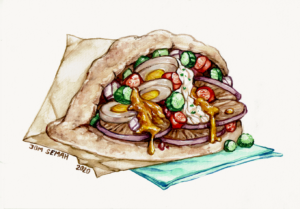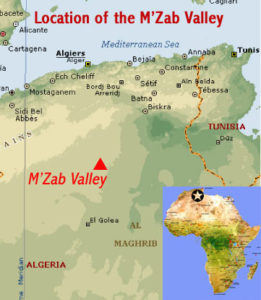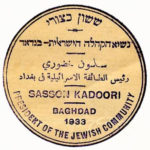שיר פטריוטי – Patriotic Poem
שיר פטריוטי
ֲאנִי ִעיָרִקי-ִפּיָג’ָמה,ִאְשִׁתּי רוָֹמנִיָּה
וְַהַבּת ֶשָׁלּנוּ ִהיא ַהַגּנָּב ִמַבְּגָדד.
אָמּא ֶשִׁלּי ַמְמִשׁיָכה ְלַהְרִתּיַח ֶאת ַהְפָּרת וְַהִחֶדֶּקל, ֲאחוִֹתי ָלְמָדה ְלָהִכין ִפּירוְּשִׁקי ֵמִאמּוֹ ָהרוִּסיָּה ֶשׁל ַבֲּעָלהּ.
ֶהָחֵבר ֶשָׁלּנוּ, ָמרוֹקוֹ-ַסִכּין, תּוֵֹקַע ַמזְֵלג
ִמְפָּלָדה נְְגִלית ְבָּדג ֶשׁנּוַֹלד ְבּחוֵֹפי נוְֹרֶבְגיָה. ֻכָּלּנוּ פּוֲֹעִלים ְמֻפָטִּרים ֶשׁהוְּרדוּ ִמִפּגּוֵּמי ַהִמְּגָדּל ֶשָׁרִצינוּ ִלְבנוֹת ְבָּבֶבל.
ֻכָּלּנוּ ֲחנִיתוֹת ֲחֻלדּוֹת ֶשׁדּוֹן ִקישוֹט ֵהִעיף
ַעל ַטֲחנוֹת ָהרוַּח.
ֻכָּלּנוּ ֲעַדיִן יוִֹרים ְבּכוָֹכִבים ְמַסנְוְֵרי ֵעינַיִם ֶרַגע ִלְפנֵי ֶשֵׁהם נְִבָלִעים
ִבְּשִׁביל ֶהָחָלב.
PATRIOTIC POEM
I’m a pajama Iraqi, my wife’s a Romanian gal
and our daughter is the thief of Baghdad.
My mother still boils the Euphrates and the Tigris,
my sister has learned how to make piroshki
from her Russian mother-in-law.
Our friend, a knife Moroccan, stabs an English
steel fork into a fish born on Norwegian shores.
All of us are workers sacked from the scaffoldings
of the tower we wanted to build in Babel.
All of us are rusty spears
that Don Quixote threw at the windmills.
All of us are still shooting at dazzling stars
a moment before they are swallowed up
into the Milky Way.
Translated by Vivian Eden
The Art Of Cooking – Sabich
 Sabich is one of my favorite street food! Whenever I go to Israel I have to visit Oved’s Sabich, to enjoy this delicious Iraqi Jewish Pita sandwich.
Sabich is one of my favorite street food! Whenever I go to Israel I have to visit Oved’s Sabich, to enjoy this delicious Iraqi Jewish Pita sandwich.
The ingredients inside the Pita bread are a mix of classic Iraqi ingredients combined with Israeli ones, and together they blend into a perfect taste.
There are a lot of components in the Sabich which actually take time to prepare but it is definitely worth it.
Ingredients:
Israeli salad:
1 Cucumber
2 Tomatoes
1 Large onion
1 Lemon
Parsley
Sabich:
Large Pita bread
Hard-boiled eggs
Large eggplant
Hummus
Salt
Oil to pan fry with
The Sauces:
Amba sauce
(Amba sauce is a very important ingredient but hard to find at local grocery stores. It is a spicy pickled mango sauce, and maybe in the future I will write a recipe. But a good substitute could be the mango chutney.)
Tahini sauce (This is the sauce not the paste, one can make it simply by mixing the tahini, lemon juice, and minced garlic. Season with salt to test.)
Harissa (If you like spicy food!)
Making the eggplant:
First cut the eggplant in large slices and lay them flat on paper towels.
salt generously and wait for about 15 minutes.
There will be a lot of moisture rising out of the eggplant.
Remove the moisture with a paper towel and flip them and do the same process on the other side.
Once the sliced eggplant is done “crying” removes all the moisture from them.
In a skillet fry the sliced eggplant with oil on a low fire until golden brown on both sides.
Making the hard-boiled eggs:
Hard-boiled the eggs and let them chill afterward. Peel the hard-boiled eggs and place them in a box full of water with some tea bags and cover the box.
Let the hard-boiled eggs marinated in the fridge.
Making the Israeli salad:
Dice the cucumber, tomato, and onion and mix them in a bowl. Add chopped parsley and lemon juice.
Create the Sabich!:
Make sure the Pita bread is warm. When reheating Pita bread in the oven make sure to make it wet first, this will keep the Pita bread soft.
Open up the Pita bread and smear a thick layer of hummus on both insides.
Cut the hard-boiled eggs in slices and fill the Pita bread with the hard-boiled eggs and eggplant.
Then add the Israeli salad on top and the sauces!
Once again, this Pita sandwich has a lot of components, but all of them matter and make a perfect Sabich.
So, I hope you will try it out yourself!
Beteavon!
Who Owns Iraqi Jewish History? A Personal Story
In 2013, Maurice Shohet, an Iraqi Jew who now lives in Washington, D.C., received a surprising email from the National Archives. A librarian had recovered his elementary school record that was left behind nearly 40 years ago when he and his family fled Iraq. The record is part of a cache of thousands of personal documents and religious texts that were found at the start of the Iraq War, drowning in the cellar of a building run by one of the world’s most wanted men.
Visit http://www.ija.archives.gov for more information.
Iraqi Jewish Archive
 Preserving the Iraqi Jewish Archive
Preserving the Iraqi Jewish Archive
Startling evidence of the once vibrant Jewish life in Iraq came to light in May 2003 — over 2,700 books and tens of thousands of documents were discovered in the flooded basement of the Iraqi intelligence headquarters by a US Army team.
The remarkable survival of this written record of Iraqi Jewish life provides an unexpected opportunity to better understand this 2,500-year-old Jewish community. For centuries, it had flourished in what had generally been a tolerant, multicultural society. But circumstances changed dramatically for Jews in the mid-twentieth century, when most Iraqi Jews fled and were stripped of their citizenship and assets.
To provide accessibility throughout the world to the damaged materials found in 2003, the US National Archives and Records Administration and its partners have preserved, cataloged, and digitized the books and documents.
The IJA website: https://ijarchive.org
Searching the Iraqi Jewish Archive
Searching the Iraqi Jewish Archive is much like searching an electronic library catalog. To craft searches that will bring up the material that interests you, whether school records, Baghdadi chief rabbis, or laws governing the Jewish community, it is important to understand what is in a cataloging record. Records for books include the most complete publication information available and may include the title in its original language and in transliteration, author, Hebrew and secular dates of publication, place of publication, and publisher. This is followed by a short, two-to-three-sentence description of the book and then a list of keywords. Documents similarly have a title, description, and keywords. The results of any search will be a title or descriptive title plus a brief cataloging entry and a picture. Click to see a more extensive description as well as keywords related to the entry and a PDF of the actual book or archival record (these PDFs can be viewed on an online e-reader or downloaded). Suppose you searched for “Frank Iny School”: you would find not only student records but also bills, correspondence, receipts, and class rosters. To narrow a search to just student records, try a new search on the keyword “students”. The most common terms are included to facilitate searching. Transliteration follows the Library of Congress Rules of Romanization for Hebrew and for Arabic Alternate spellings for certain Hebrew and Arabic transliterations will continue to be added.
Search the collection: https://ijarchive.org/search
Correspondence to and from Rabbi Sasson Khedouri
This archival material includes most correspondence with Rabbi Sasson Khedouri.
Topics include: correspondence from Midrash Talmud Torah regarding educational and financial matters; election of members to a Management Committee for the Baghdad Brigade; letter to the Ministry of Foreign Affairs regarding Rabbi Khedouri’s testimony before a British-American Commission of Inquiry on the state of Israel; document of questions and Rabbi Khedouri’s answers on the following issues: Jewish status in Iraq, the state of Israel, equality of Jews on paying taxes, education, obtaining jobs, business, religion freedom, travelling, teaching Hebrew, and the number of Jews in Iraq; a form to collect factual information on the Jewish community to be published in the al-Rafidain Directory; a letter from Iraq Red Crescent Society to the head of Jewish community regarding the death of three Iraqis in Java, Indonesia prisons; a letter from a researcher; an invitation for a theater play from the Children’s Protection Society; Shamash Company asking for help to distribute fabric to the poor; letter of complaint from a Muslim because some Jews entered the al-Kazmia holy place; a complaint regarding the Jewish community’s girls behavior; letter asking for help on a forgery matter; letter asking for help from a Russian Jew who moved to Baghdad; letter asking for help to get papers from the Ministry of Supply to print the Jewish annual calendar for 5708; letter from the al-Jafería Schools Association asking for book donations to build a library; letters to the head of the Jewish community regarding obituaries for martyrs; letter to write an introduction for a book about Iraqi Crown Prince Abdullah; letters from the President of the Jewish Community asking for help on some matters.
Go to: https://ijarchive.org/content/3108
Salima Murad – Iraqi Jewish singer (1900-1974) سليمة مراد
Eness Elias ~ Iraq Still Honors This Jewish Star Known as the ‘Voice of Baghdad’ – Haaretz (Published on 20.11.2018)
Salima Mourad takes the stage with her head slightly bowed and a big smile, wearing a sleeveless dress. She always looks stylish; she doesn’t shout it out, it’s simply part of her. She’s hypnotic. You can’t take your eyes off her, in the old film clips. She has a virtuosic voice that she uses in any way she sees fit, spanning a broad vocal range, singing softly and forte. She seems to know exactly what she’s doing. There’s a reason why Mourad, who passed away in 1974, is still considered one of the most famous and admired singers in Iraq.
Last week, a unique tribute was paid to Mourad within the framework of the Jerusalem International Oud Festival. Called “The Voice of Baghdad,” the event took place under the auspices of the city’s Confederation House and featured an impressive group of singers and instrumentalists, as part of a collaboration involving veteran producer and musician Yair Dalal, with artistic direction by Effie Benaya.
The life of Salima Mourad, who was born in 1900, sounds like something out of a Hollywood film: A young Jewish Iraqi woman begins to sing and turns out to be one of the greatest talents in the country and in the entire Arab world. She performs in the most prestigious venues, in cafes, at nightclubs and family parties, and becomes a famous and admired figure, as great as Egyptian singers Umm Kulthum and Laila Mourad – who was also Jewish.
Read more: https://www.haaretz.com/a-tribute-to-the-jewish-crooner-known-as-the-voice-of-baghdad
Rebecca A. Wall ~ The Jews Of The Desert: Colonialism, Zionism, And The Jews Of The Algerian M’zab, 1882-1962
 University of Michigan, 2014. This dissertation studies the Jewish community of the Algerian M’zab during the French colonization of the Sahara from 1882 until 1962. French officials refused to extend the 1870 Crémieux Decree that emancipated Algerian Jews to the M’zab after its 1882 annexation. French administrators saw the M’zabi Jews as insurmountably different and consequently excluded them from emancipation. Despite petitions from the community and French and Algerian Jewish advocacy for extending emancipation to the south, successive French colonial and metropolitan governments declined to extend the Crémieux Decree to the M’zab. French officials justified this decision by invoking the insurmountable difference of M’zabi Jews, who were both too Jewish and too similar to Algerian Muslims to be “regenerated” as French citizens.
University of Michigan, 2014. This dissertation studies the Jewish community of the Algerian M’zab during the French colonization of the Sahara from 1882 until 1962. French officials refused to extend the 1870 Crémieux Decree that emancipated Algerian Jews to the M’zab after its 1882 annexation. French administrators saw the M’zabi Jews as insurmountably different and consequently excluded them from emancipation. Despite petitions from the community and French and Algerian Jewish advocacy for extending emancipation to the south, successive French colonial and metropolitan governments declined to extend the Crémieux Decree to the M’zab. French officials justified this decision by invoking the insurmountable difference of M’zabi Jews, who were both too Jewish and too similar to Algerian Muslims to be “regenerated” as French citizens.
Within the colonial legal system, M’zabi Jews were classified as “indigènes,” or natives, alongside Algerian Muslims. M’zabi Jews faced the restrictions that bounded the lives of Muslims in French Algeria and settler antisemitism that culminated in the Vichy abrogation of the Crémieux Decree in 1940. When Free French forces reinstated the Crémieux Decree in 1943, the French again excluded the M’zabi Jews. Following this, a number of individuals and families from the community left Algeria to join the growing Jewish community in British mandatory Palestine.
M’zabi Jews were the only organized Jewish community who left Algeria for Israel. Their history challenges historiography that claims Zionism was unsuccessful in Algeria. M’zabi Jews were not ardent Zionists, but they did take advantage of the opportunities for emigration made possible by international Zionist organizations including the American Joint Distribution Committee and the Jewish Agency. In contrast to the larger history of Algerian Jews, the history of the M’zabi Jewish immigration from Algeria to Israel is part of the larger history of Jewish migrations from the Arab world to Israel after 1945. M’zabi Jews won full French citizenship in late 1961, but most still opted to make their way to Israel rather than France.
The complete thesis
(PDF-format): https://deepblue.lib.umich.edu/bitstream/rawall_1.pdf




